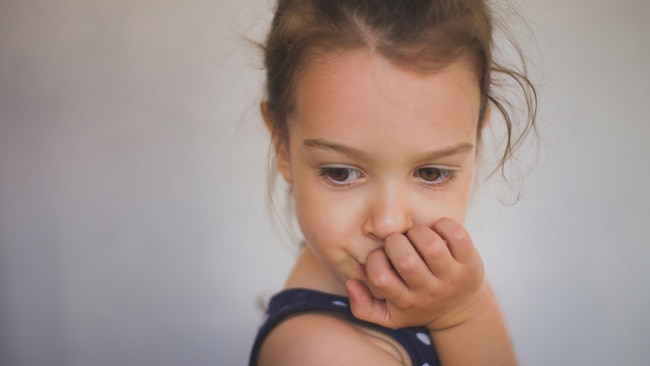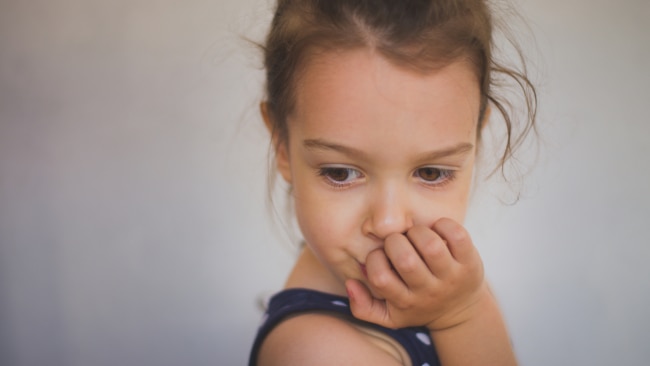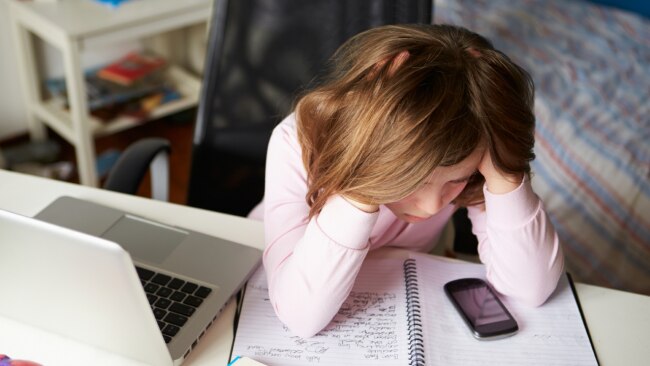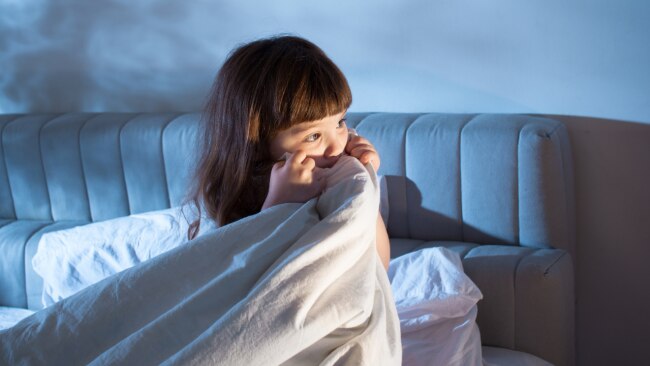The four surprising signs your child is anxious
There are specific behaviours a child will display that shows they might be struggling with overwhelming worry. This is how to spot them, and how to give support.

Parenting
Don't miss out on the headlines from Parenting. Followed categories will be added to My News.
The world is a big place – for some children, it’s full of adventure; for others it’s frightening and anxiety-inducing.
That intense worry can have far-reaching effects on a child’s daily life.
It can cause excessive distress or panic, making simple tasks seem overwhelming, leading to difficulty concentrating.
Social situations can become a source of stress and unease, fuelling avoidance and isolation, and it can spark behaviours that are less than favourable.
Want to join the family? Sign up to our Kidspot newsletter for more stories like this.

So, how can parents identify the signs?
It starts with understanding that anxious behaviours are not ‘naughty’ or ‘bad’, says child psychologist Dr Anna Cohen.
“Behaviours fuelled by anxiety represent a brain that is trying to navigate its way back to a place of safety,” explains Dr Cohen.
“As parents, we often view our children’s behaviour as a reflection of ourselves and our parenting, when in fact it has a lot to do with our child’s brain registering something as a threat.”
“This is why, as parents, we need to learn to recognise behaviour that’s fuelled by anxiety as opposed to pushing boundaries or just outright inconsiderate behaviour.
"Anxious children can face significant struggles so it’s important we provide the necessary support to help them navigate their fears, nurture resilience and empower them to embrace a brighter and more confident future.”
Dr Cohen shares four ways anxiety can present in children and teens, as well as ways to help a child struggling.

1. Big feelings and Meltdowns
When anxiety turns up the dial on something that could be perceived as a threat, it can overwhelm your child’s thoughts, feelings and behaviours leading to some big feelings and meltdowns.
This reaction is built on the instrictive understanding that when big feelings happen, people take notice, whether it’s tears of frustration or the aggression of anger.
Emotion is energy in motion (think: e–motion) so children need to learn to connect with their feelings to enable them to manage them in the moment.
"As a parent we need to learn to not fuel their emotions through our own hostile or judgmental reactions to the situation," Dr Cohen says.
“A meltdown or big feelings response is emotions seeking an outlet. During those moments, the thinking brain shuts down, so it can’t hear rational information or instruction.
“Trying to have a conversation at this point won’t be productive.
"To help the storm pass, meet your child halfway by acknowledging their emotions. When that happens, you can start to have a meaningful conversation to talk through what triggered them and discuss solutions.
2. Sore stomach and muscle soreness
Anxiety can manifest in physical symptoms such as headaches, stomach aches, fatigue and muscle soreness, which can all hinder your child’s ability to fully engage in their daily activities.
"The impact of anxiety on a child’s academic performance, relationships and overall quality of life cannot be underestimated," Dr Cohen says.
"It’s imperative that we recognise and address these challenges to support our anxious children effectively.
"Respecting our children’s anxious feelings while not empowering them is a crucial aspect of support. Validating their anxiety involves acknowledging their emotions, assuring them of support, and providing a nurturing environment.
"By doing so, we help our children build resilience and develop effective coping strategies."

3. Clinginess
We all have toddlers who, when anxious, cling to our leg. As children grow older, anxiety can make them want to stay close to the people they feel safest around. This is an instinctive response that may resemble clinginess.
"Try holding your child, cuddling them or simply sitting with them as the physical closeness, warmth, and touch releases oxytocin, a bonding chemical that will help to calm them," Dr Cohen says.

4. Demanding behaviours
When children are anxious, they are more likely to become demanding, aggressive, ignore direction and refuse comfort and guidance.
It’s not necessarily bad behaviour; rather, it’s an attempt to gain control to feel safe.
A common battleground for anxious children is bedtime as they refuse to go to bed, demand another story or plead with their parent to lie down with them or asked to go into their parents bed.
"Parents need to careful not to create habits that are difficult to break," Dr Cohen explains.
"What can start as a one-off cuddle for reassurance can fast turn into a nightly routine of jumping in their bed.
"An alternative is to give them a cuddle, explain they are safe and promise to come in and check on them regularly. This also teaches them to build resilience."

What can parents do to support their child?
- Don’t avoid fear
One essential strategy for managing anxiety in children is gradual exposure to fear. Avoiding fear only reinforces anxiety in the long run.
"By supporting our children in facing their fears in a controlled manner, we can help them develop coping mechanisms and overcome their anxieties," Dr Cohen says.
"This approach builds resilience and cultivates their belief in their ability to navigate difficult situations."
- Communicate openly
Open communication plays a vital role in helping anxious children navigate their struggles. Instead of asking leading questions that reinforce anxiety, we should encourage our children to express their feelings openly.
"Reassurance is a powerful tool in breaking the cycle of anxiety. As parents, we should be mindful not to inadvertently reinforce our child’s fears. Sending messages of safety, comfort and support can alleviate anxiety and instil a sense of security," she says.
"In a world where anxiety increasingly affects our children, it’s essential that we recognise, understand and nurture our anxious children, to pave the way for resilience, confidence and a brighter future."
Dr Anna Cohen has a new online course for parents of children struggling with anxiety and behavioural problems. Find out more at annacohenandco.com.au
More Coverage
Originally published as The four surprising signs your child is anxious




